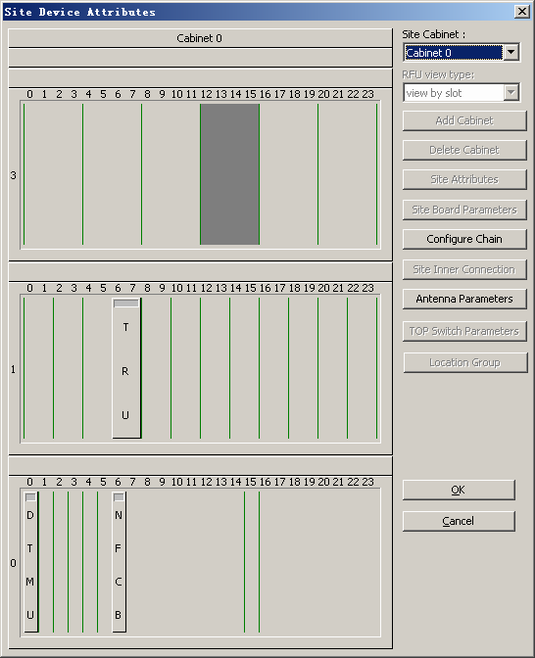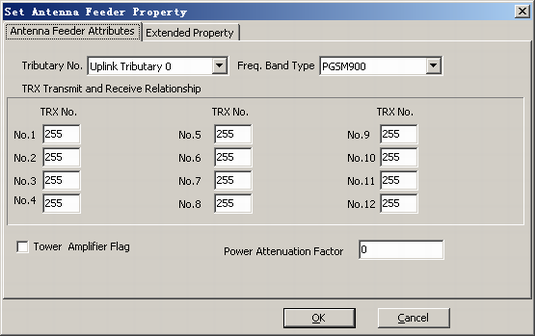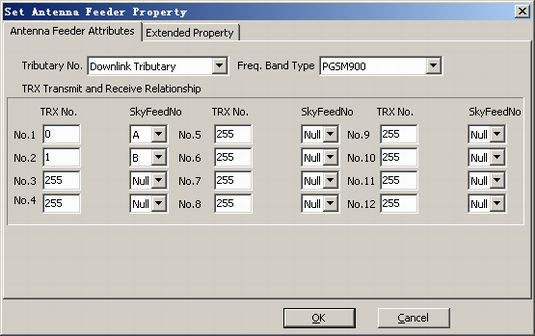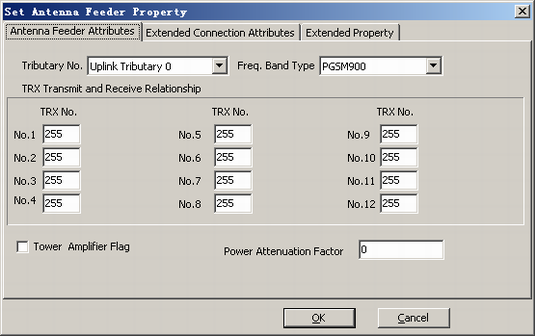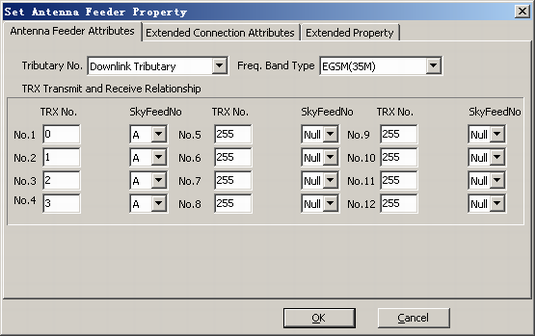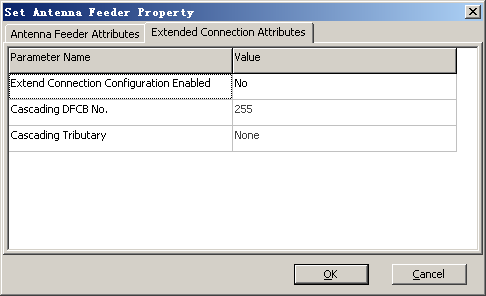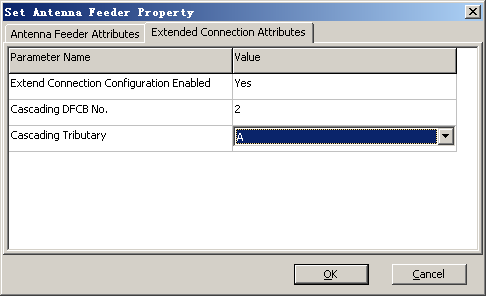This describes how to configure the antenna feeder attributes and the extension connection attributes of the DFCU and how to configure the DFCB and its antenna feeder attributes for the BTS3012, BTS3012 II, or BTS3012AE to achieve the TRX six-in-one output.
| Scenario | BSC initial configuration |
| Mandatory/Optional | Optional. Only one DFCU and one DFCB is configured when the six-in-one output of TRXs needs to the implemented in the BTS3012, BTS3012 II, or BTS3012AE. |
- The DFCB must cooperate with the DFCU to provide the six-in-one output of TRXs.
- The DFCU cannot be bound to the QTRU for use.
- The DFCB should not be configured in slot 20 of the DAFU subrack in the BTS3012, BTS3012 II, or BTS3012AE. The slots on both sides of the DFCB slot should not be configured with the DFCU or the DFCB.
- The TRX to be tuned can be configured on downlink tributary A or B. Each tributary can be configured with up to two TRXs.
- The frequency band type of the DFCB must be the same as that of the TRX in the BTS.
Prerequisite
The frequency band type of the TRX in the BTS is specified.
Preparation
Parameter |
Example |
Source |
|
|---|---|---|---|
Antenna feeder attributes of the DFCU |
Tributary No. |
Downlink Tributary |
Network planning |
Freq. Band Type |
EGSM(35M) |
Network planning |
|
TRX Transmit and Receive Relationship |
TRX No.1: 0, A TRX No.2: 1, A TRX No.3: 2, A TRX No.4: 3, A |
Network planning |
|
Extension connection attributes of the DFCU |
Extend Connection Configuration Enabled |
Yes |
Network planning |
Cascading DFCB No. |
2 |
Network planning |
|
Cascading Tributary |
A |
Network planning |
|
Antenna feeder attributes of the DFCB |
Tributary No. |
Downlink Tributary |
Network planning |
Freq. Band Type |
EGSM(35M) |
Network planning |
|
TRX Transmit and Receive Relationship |
TRX No.1: 4, A TRX No.2: 5, A |
Network planning |
|
Procedure
- On the BSC6000 Local Maintenance Terminal, right-click the BTS to be operated.
- Choose from the shortcut menu. A dialog box is displayed, as shown in Figure 1.
- Click Add or Delete Board. A dialog box is displayed, as shown in Figure 2.
- Right-click an idle slot and then choose from the shortcut menu. The addition of a DFCB is complete.
- Right-click DFCB and choose from the shortcut menu. A dialog box is displayed, as shown in Figure 3.
- See Table 1 to set the parameters, as shown in Figure 4.
- Click OK to return to the dialog box shown in Figure 2.
- Right-click an idle slot and then choose from the shortcut menu. A DFCU is added.
- Right-click DFCU and choose from the shortcut menu. A dialog box is displayed, as shown in Figure 5.
- See Table 1 to set the parameters, as shown in Figure 6.
- Click the Extended Connection Attributes tab. The tab page is displayed, as shown in Figure 7.
- See Table 1 to set the parameters, as shown in Figure 8.
- Click OK. The configuration of the extension connection attributes of the DFCU is complete.

